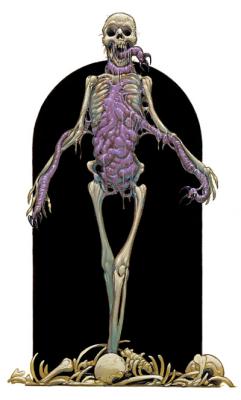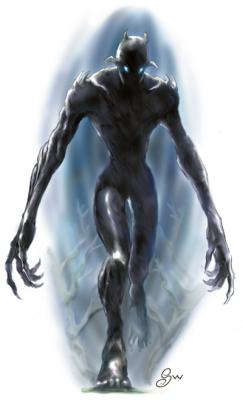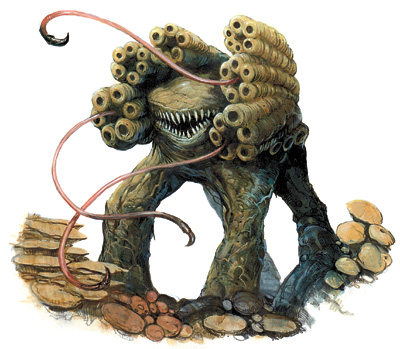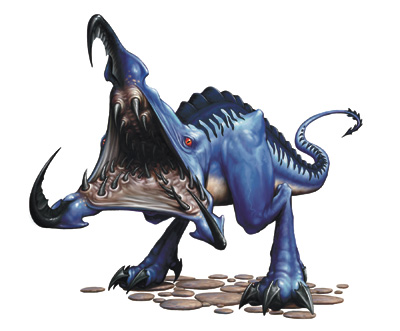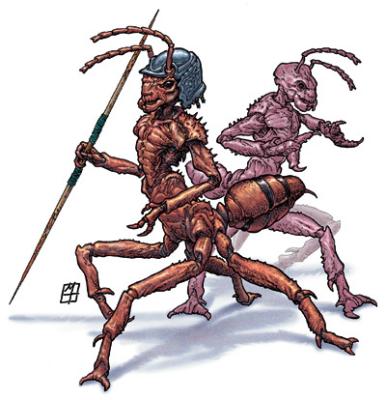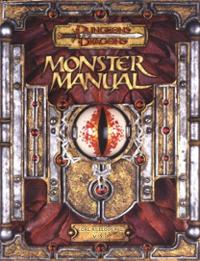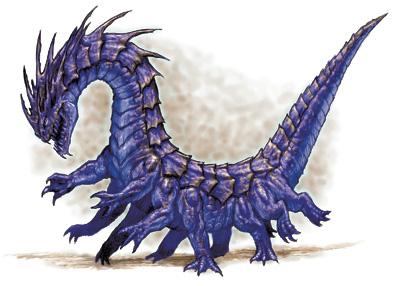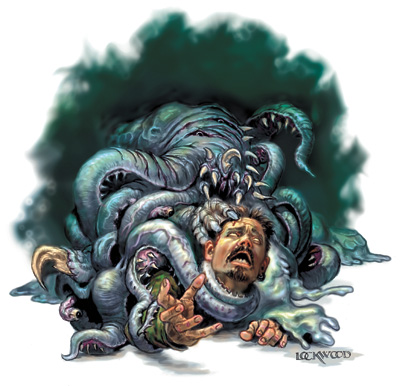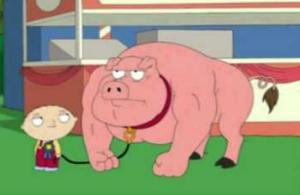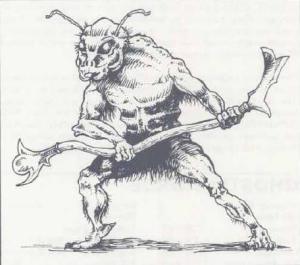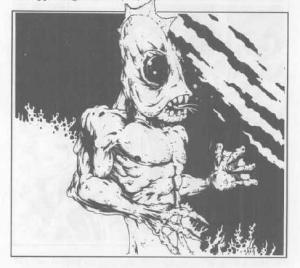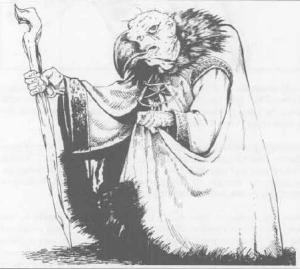Completing the Monster Manual:
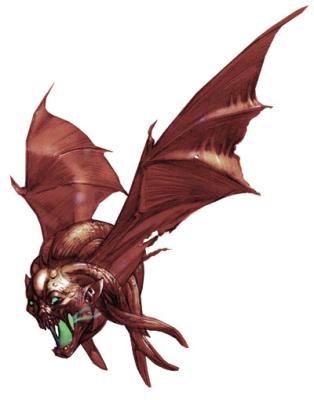
The Vargouille is a creature from before there were different creature types in D&D and eded up as an outsider in 3rd edition, even though it could just as well have been made undead like the bodak. As far as I am aware, they first appeared in the Planescape setting and they are a wonderful example of how the setting is full of things that are simultaneously silly, cool, and somewhat creepy. A vargouille is a humanoid head with a large pair of wings that has a terrifying scream that makes any creatures within 20 meters become paralyzed by fear. Their bite does very little damage, but also has a poison that makes it impossible for the target to heal any kind of injuries. But most terrifyingly, a vargouile can fly up to a paralyzed victim and give it a kiss, which starts a slow process of transformation that first makes the hair fall out, then the ears turn into large bat wings, makes it go insane, and finally causes the head to ripp off the neck and fly away as a new vargouille. Funny. But as always, some more description what you’re supposed to do with it would have been nice.
The Wight really is just a very beefed up ghoul. I like this monster and when you go into the details its background and context makes it a quite different creature. It’s still a starved corpse that sneaks around in the dark. (Variant Ghoul +1)
The Winter Wolf is a huge white wolf with who can breath icy cold and whose bite deals cold damage. Just like a color flipped hellhound. It’s bigger and tougher though, and also of human intelligence and with the ability to talk. They are not exactly masterminds, but are smart and dangerous enough to be villains in their own right who command weaker creratures as their minions. (Demon Dog +1)
And of course the Worg, because Tolkien did it. And everything that Tolkien did has to be in D&D! Its a big wolf that is slighly intelligent and evil. (Demon Dog +1)
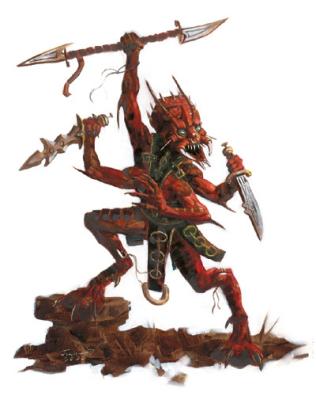
Xills are creatures that come from the novel Voyage of the Space Beagle, which also got us the displacer beast. It’s a four armed, demonic looking humanoid, but it’s actually from the ethereal plane. Unlike most ethereal monsters, it takes a xill significantly longer to move between the ethereal and material world, which makes impossible to quickly blink in and out and avoid any retaliation by its enemies. They are very intelligent and also evil, and as a nice thouch we’re also told that groups are often led into battle by a cleric of a deity of strength and travel. Their four arms help them with wrestling their enemies and when they can get a hold, they use their poisonous bite that can paralyze for several hours. The saving throw to resist it is not too high and there’s a good chance to withstand the poison, but then the xill can just try again the next round until it works. Unlike other monster (foreshadowing!) their ability to grapple is not excessively high and they can not try to bite without grappling an enemy first, which makes the ability not too powerful, but still something that can add a nice touch to a fight. Especially when the xills want to take prisoners, which they do to implant their eggs into them. With a duration of 90 days until the eggs hatch, there is plenty of time to try to rescue those prisoners and get them help. If you make some more backstory and context for them, these could be quite interesting enemies for a campaign. Continue reading “Fantasy Safari: Monster Manual (D&D 3rd Ed.), Part 4”

